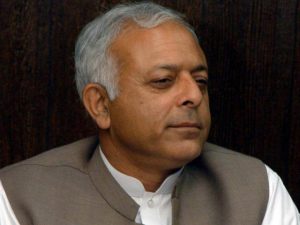MULTAN: Perched in between legendary Suleman Mountain Range and mighty river Indus, the centuries old Harrand fort in Jampur tahsil of district Rajanpur is once again under the spotlight to undergo a maiden effort by the Punjab archaeology department for restoration and conservation of the monument, now mostly in ruins.
“The monument has never undergone restoration/conservation since 1985 when it was declared a protected site by the Punjab government”, an official said. It was also declared as Punjab heritage and officials think the restoration/conservation may cost around Rs 300 million.
The historic fort, located near the city of Harrand, was originally built by Hindu Raja Harnacus and his son Lok Bhagat on the pattern of Mohen-jo-Daro opposite historic Chachar Pass in Suleman Mountain Ranges to guard against the invaders. The fading signs of the edifice may still be there in the form of debris and bricks scattered around the old site at an area now adays called Pachadh.
The Sikh Governmor of Multan Sawan Mal, however, used the material of the old fort and rebuilt it at a new location at Harrand in 1831 AD to control the Baloch tribes.
Having seen three different periods including Hindu, Macedonian and Muslim, the fort seems to be hiding thousands of secrets.
There is a folklore associated with the Macedonian conqueror Alexander the great and Hindu Raja’s daughter Naushaba. Alexander heard about the beauty, bravery and administrative traits of the princess and went to the fort introducing himself as messenger of Alexander. The princess ordered the messenger to be taken to royal guest house where she pointed towards the wall decorated with images of contemporary Kings including Alexander.
Iranian poet Nizami penned the incidence in Sikandar Nama adding that both got married. However, the veracity of the marriage or this incident is yet to be proved by historical evidence.
The third period of this historical monument started with the arrival of Muslim conquerors in early eighth century. The palm trees found in the region are indicated as evidence of arrival of Arab Amry. Subsequently all the adventurers from Chengiz Khan to Sultan Muhammad Ghauri visited the fort and used it for their next moves.
The famous battle between British troops and Marri-Bugti tribes was fought here in 1867 AD. The British used the fort as cantonment and carried out limited excavation and sent historic artifacts recovered from the area to British museum in London.
Spread over 30 acre area with irregular sixteen sided fortification wall, the fort has sixteen bastions with battlement tops. Main entrance is in the west and the other on the opposite side.
The fort is mostly in ruins and old photos showed its debris reaching the height of the fortification wall at some places.
Incharge Archaeology department Multan, Malik Ghulam Muhammad, when contacted, said, they were preparing concept paper for the monuments in need of restoration and conservation in South Punjab which included the Harrand fort adding that the report would soon be sent to the archaeology department high ups for discussions and subsequent approval.
Newspakistan.tv | YouTube Channel











